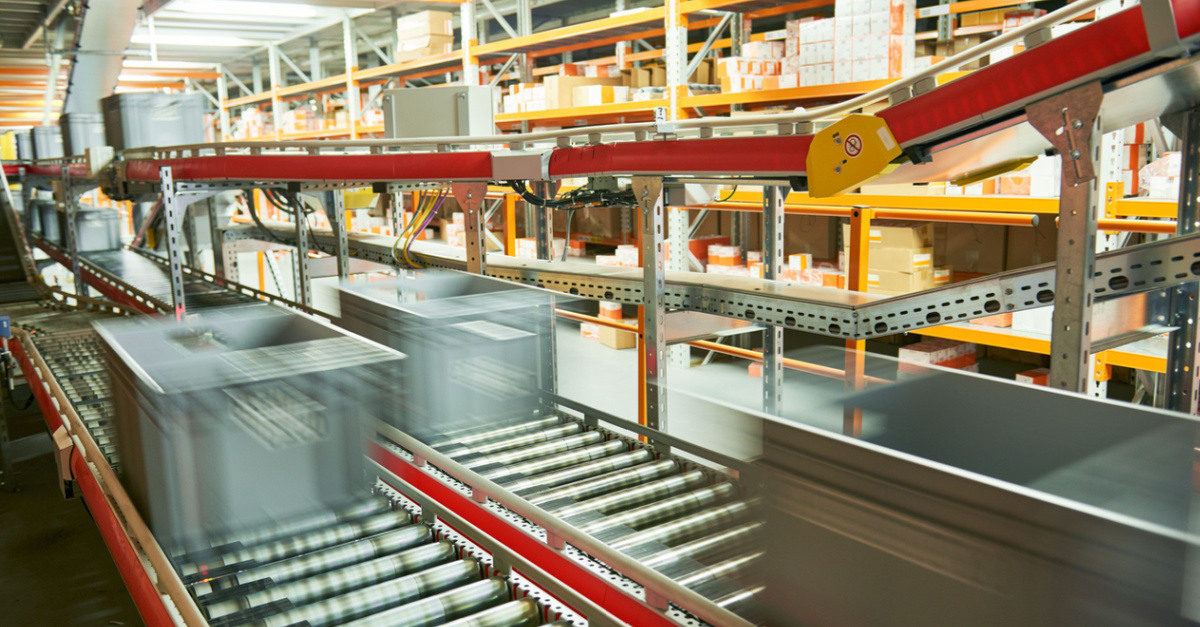3 min read
Warehouse Efficiency Strategies Used by 3PLs
A number of years back, there was an industry movement to instill lean and Six Sigma practices and principles – powerful efficiency tools in...

In 2023, the case for warehouse automation across industries seems an easy one to make. Labor is tight and expensive, and demand for rapid order fulfillment and delivery is not abating. Yet despite the buzz, most companies remain largely manual affairs. In 2022, a survey by Modern Materials Handling found that 90% of warehouse operations had no automation in place at all.
Warehouse automation systems can take on many forms. The 1960s are as good a place to start its history as any, with the creation of the first automated storage and retrieval system (AS/RS) and warehouse management system (WMS) by Demag, now known as Dematic. The next decade saw Walmart open its first WMS-powered distribution center, and it was off to the races.
Warehouse control systems (WCS), designed to handle automated equipment such as carousels, conveyors, and sortation devices, first came online in the 1990s. In the 2000s, advanced warehouse execution systems (WES) allowed companies to do waveless order processing. The 2010s saw the rise of robotic startups, offering both automated guided vehicles (AGVs) and the more advanced autonomous mobile robots (AMRs). And now, in the 2020s, artificial intelligence is making systems even smarter and more efficient.
In all its various guises, warehouse automation technology is designed to make distribution and fulfillment centers operate more efficiently, lessen reliance on labor, and enable higher order throughput to handle business growth as well as demand spikes.
While overall adoption of warehouse automation systems remains relatively low, investment is growing as more companies realize the need to improve operational performance to stay competitive. According to industry figures compiled by Statista, the global logistics automation market is expected to more than double between now and 2027, growing from $60.53 billion to $121.34 billion.
Given the variety of solutions available, the capital investment involved, and the importance of getting the selection right, look for a partner with proven expertise and deep industry experience who can advise you on the best course based on your particular business needs.
Companies can ill afford inaccuracies in inventory management, order processing, and fulfillment operations, all of which are inextricably linked. Offer an item for sale online, but it’s not actually in stock? Chances are pretty good the customer is lost forever. Sending more orders to the floor than the current shift can handle? A fulfillment backup ensues.
Inefficiency in your warehouse operations is also a huge drain on company resources. Simply throwing more labor at demand spikes or company growth can quickly get expensive — assuming enough workers are available in your market. Using a manual slotting process? Picking efficiency suffers as associates log more steps to complete orders.
A lack of automation in your warehouse operations can impact various measures of performance that you’re tracking. For instance, picking error rates in a manual operation of as low as 1% to 2% can result in lost customers and high costs associated with fulfilling the replacement order.
Other KPIs that can be adversely affected through reliance on manual processes include:
Increasingly, companies need to build a greater degree of scalability and flexibility into their warehouse operations due to volatile market conditions, increased costs, and supply chain disruptions. The ability to quickly scale order throughput up and down based on fluctuating demand has become table stakes to create a successful, profitable operating model.
Naturally, this is difficult to achieve in a mostly manual warehouse operation. While a workforce management component is undoubtedly involved in scaling when automated systems are in place, it’s less expensive and much easier to achieve without them.
With so many options available and the technology advancing so rapidly, warehouse operations managers today can choose from a variety of automation software and hardware based on their particular needs. Some enterprise-level systems, like a large goods-to-person grid, can run into the low seven figures. However, many solutions provide a measurable boost in accuracy and efficiency at more affordable price points.
Here’s a quick rundown of some key categories. As a general observation, many of them rely on advanced logic systems employing machine learning and artificial intelligence to maximize performance and drive continuous improvement.
Depending on the type of systems used, warehouse automation provides shippers with a variety of benefits, which fall under these main categories:
Without order accuracy, return rates increase, costs rise, sales are lost, inventory levels are off, and customer satisfaction metrics suffer. Even the most meticulous, scrupulous fulfillment associate is prone to picking errors.
Several of the automation solutions listed above provide measurable improvements in order accuracy. Various picking technologies that guide associate actions (pick to light, put to light, voice picking) or bring goods to them (GTP, robots) use scanners and sensors tied into inventory through WMS and OMS.
These systems also ensure that accurate warehouse inventory levels are maintained. They help inform decisions around space optimization and layout based on SKU velocity, creating and modifying “hot” and “cool” zones.
Innovative automation technology streamlines warehouse processes, enabling faster and more efficient operations. They can handle repetitive, time-consuming tasks faster than humans. In the fulfillment process, items are retrieved, sorted, and sent off for packing and shipping with lightning speed. On the inventory side, data from these processes is fed into an ERP system, using machine learning and AI to drive more intelligent sourcing/procurement and replenishment decisions.
While a capital outlay is always required to implement any new technology, the long-term cost savings can be substantial, and positive ROI can often be achieved in 12–18 months. Companies should take incremental steps when upgrading systems, placing smaller bets, and proving them out before going on to the next level. Finding an experienced partner well-versed in warehouse technology, both hardware and software, is a crucial success factor and the first step in formulating your automation strategy.
One significant way warehouse automation, in its various forms, provides savings is by reducing labor costs. It enables you to optimize the use of your workforce, especially in tandem with the introduction of lean processes. You can also reduce reliance on human labor. This is especially important as it becomes harder to maintain staffing levels, particularly during peak periods, and hourly wages rise in a competitive environment with growing union influence.
Productiv, a leading tech-forward 3PL, helps optimize your warehouse operations front to back. Our advanced systems let you reduce costs and increase order processing, inventory management, kitting and assembly, and shipping efficiency.
Our WMS system connects via API or EDI to your ERP for seamless order flow. Pre-set rules and algorithms determine the lowest-cost shipping method, and picking waves are set up based on order details for maximum efficiency. We also integrate all your systems, including retail compliance for labeling and advanced shipping notifications for fast onboarding.
Business intelligence tools enable real-time analytics on order status and critical SLAs such as on-time percentage, inventory accuracy, and order accuracy. This improves both customer communication and customer satisfaction processes, and streamlines access to data for your customer and sales teams.
Through a partnership, Productiv provides state-of-the-art cycle counting using advanced computer vision and mapping capabilities, enabling 100% inventory accuracy in a fraction of the time.
With warehouse automation technology advancing so rapidly, accuracy and efficiency gains are becoming easier to achieve, at investment levels that can be easily justified based on payback horizons. From picking systems to GTP and robotics, tools are available to help supercharge performance and future-proof your business.
Ready to see how our innovative warehouse automation solutions can make a difference? Speak with a Productiv expert today.
Get ideas on how to delight your customers with delivery on their timeline.

3 min read
A number of years back, there was an industry movement to instill lean and Six Sigma practices and principles – powerful efficiency tools in...

3 min read
Warehouse operations are like a busy airport, where each plane is a product shipment or batch of inventory, and the air traffic control tower is the...

6 min read
In today’s fast-paced and ever-changing marketplace, small businesses face unique challenges in managing their logistics operations. From fluctuating...